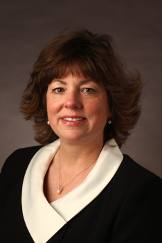This is the sixth and final installment of a series of guest blog posts by the faculty of the Vanderbilt School of Nursing about the previous night’s episode of Call the Midwife airing on Sundays on NPT and PBS Stations natiowide at 7:00 p.m. Central, September 30-November 4. Check in here every Monday morning for the next six weeks for historical and contemporary context on the show, and some fun discussion. SPOILER ALERT: Some may contain spoilers, so please be aware of that.
By Michelle Collins PhD, CNM
 I hope that everyone who has watched this series has enjoyed the screenwriting as much as I have. I join those of you who are “saps” for introspective reflections that make one hit pause and the rewind to listen again. This week I reflect on our main character’s thoughts as she stood gazing into the river below at the end of the episode:
I hope that everyone who has watched this series has enjoyed the screenwriting as much as I have. I join those of you who are “saps” for introspective reflections that make one hit pause and the rewind to listen again. This week I reflect on our main character’s thoughts as she stood gazing into the river below at the end of the episode:
“Working in the east end, I found grace, faith and hope hidden in the darkest of corners. I found tenderness in squalor and laughter amid filth. I found a purpose and a path, and I worked with a passion for the best reason of all; I did it for love.”
The reflection of Jenny Lee (Jessica Raine) struck a chord with me as a midwife. I knew exactly what she meant. Those of us who work in this profession generally feel that there was a call that brought us to do it. Whatever basis of spirituality you come from, we can probably all identify with feeling a calling to certain things we have done in life, whether that has occurred to affect our chosen career paths, our decision to marry or have children, or any other major decision in our lives. That calling pulls us – sometimes readily and sometimes somewhat begrudgingly – towards an end.
In these first few episodes you may have noticed that the midwives tended to care for women who were underserved: the poor, the disenfranchised, the immigrant. Actually midwives working in the National Health Service did, and do, “catch” approximately 80% of the babies born in the UK – rich and poor alike. The particular midwives of this series do work out of a charitable religious organization in a poorer part of London. Hence we as viewers see that the majority of their clientele are the underserved. Midwives have historically always cared for women who were underserved.
Looking at the history of midwifery in America, prior to about 1920, midwives cared for the poor, often newly immigrated women, safely attending to their births at home. At about that time, the medicalization of birth took over and the birth process was viewed more as pathologic than natural. Physicians began to tout the “necessary” interventions for women to have a safe birth which included episiotomy, sedation, artificial dilation of the cervix, and forceps assisted births. Women who could afford to do so began to give birth in hospitals in order to reap the “benefit” of this newly found medicalization. Those women who could not afford to go to the hospital to have their babies stayed at home, with their births attended by the community midwives. Those who birthed at home had lower rates of childbirth complications and death and their outcomes were markedly better than those delivered by physicians in hospital.
The positive outcomes from midwifery-attended births are apparent still, manifested in lower cesarean rates, lower vacuum and forceps assisted birth rates, as well as a host of other positive outcomes. In those countries with the best maternal and child outcomes worldwide, the majority of births are attended by midwives. Though it is slow in coming, Americans are catching on. And yes, those of us who are midwives can attest that we still “do it for love.”
Michelle Collins PhD, CNM, is an Associate Professor of Nursing, Director Nurse-Midwifery Program, at Vanderbilt University School of Nursing
Missed our analysis of Previous Episodes? Read them here.
Missed Previous Episodes? Watch them online now through December 4.
